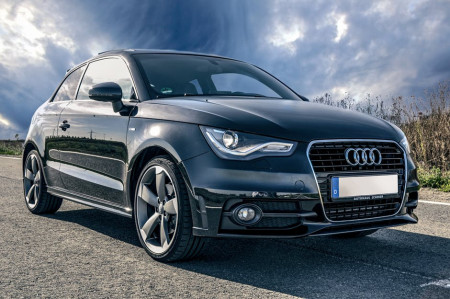UK Number Plate Format

The present number plate format in the United Kingdom was introduced by the DVLA and DVA (for Northern Ireland) in September 2001 to replace the previous format which had nearly exhausted its sequence. The format’s regulation is largely based on the Vienna Convention on Road Traffic treaty and EU’s Council Regulation of 1998 (No 2411/98).
The current format consists of seven characters (and a space), divided into three individual sections.
(i) Local Memory Tag
The first two characters on the UK plate comprise of two letters, which denotes the geographic origin. Initially, the two letters refers to one of DVLA and DVA’s 33 branches across the country. However, since the agency’s offices were closed in 2013, the letters now refer to the region where the car dealer or vehicle owner is located. Aside from enlarging the combination pool, the local tag is a useful tool in helping law enforcement officials to quickly determine the origin of a vehicle. This can be particularly helpful in spotting out of towners on local roads. AO (Norwich), CP (Swansea) and WM (Bristol) are some examples of the local tag.
(ii) Age Identifier
The second part of the format is the age identifier, which comprises of two numbers. The numbers reflect the year when the vehicle was registered. However, the actual year of registration can only be used for registrations between March and August. For instance, ‘10’ for 2010, ‘13’ for 2013, and ‘18’ for 2018. For vehicles registered between September and February, the number 50 must be added to the year. For example, ‘60’ for 2010, ‘63’ for 2013 and ‘68’ for 2018. This quirky half yearly split ensures that there are sufficient available combinations every year for the next three decades.
(iii) Three Random Letters
The next part of the format is the three random letter sequence (after a space). With the exception of the letters ‘Q’ and ‘I’, the other 24 letters of the alphabet are used here. However, DVLA and DVA also rarely issue number plates with the letters ‘O’ and ‘Z’ as they look quite similar to the numbers ‘0’ and ‘2’. CBD, HJL and JKA are just three examples of out a possible 331,776 available combinations.
So basically, UK’s number format looks something like this: YYNN LLL (Y denotes year, N for number, and LLL for letters). DVLA calculated that this format will cover the needs of all UK vehicle registrations for 50 years. As such, we won’t be seeing a new format until 2051.
Interestingly, Romania’s number plate format is almost identical to UK’s format, with three exceptions. The background for the rear plates in Romania is white, and the font and character spacing are also different. However, in the absence of a country flag, most would mistake a Romanian vehicle on British roads for a local one.
